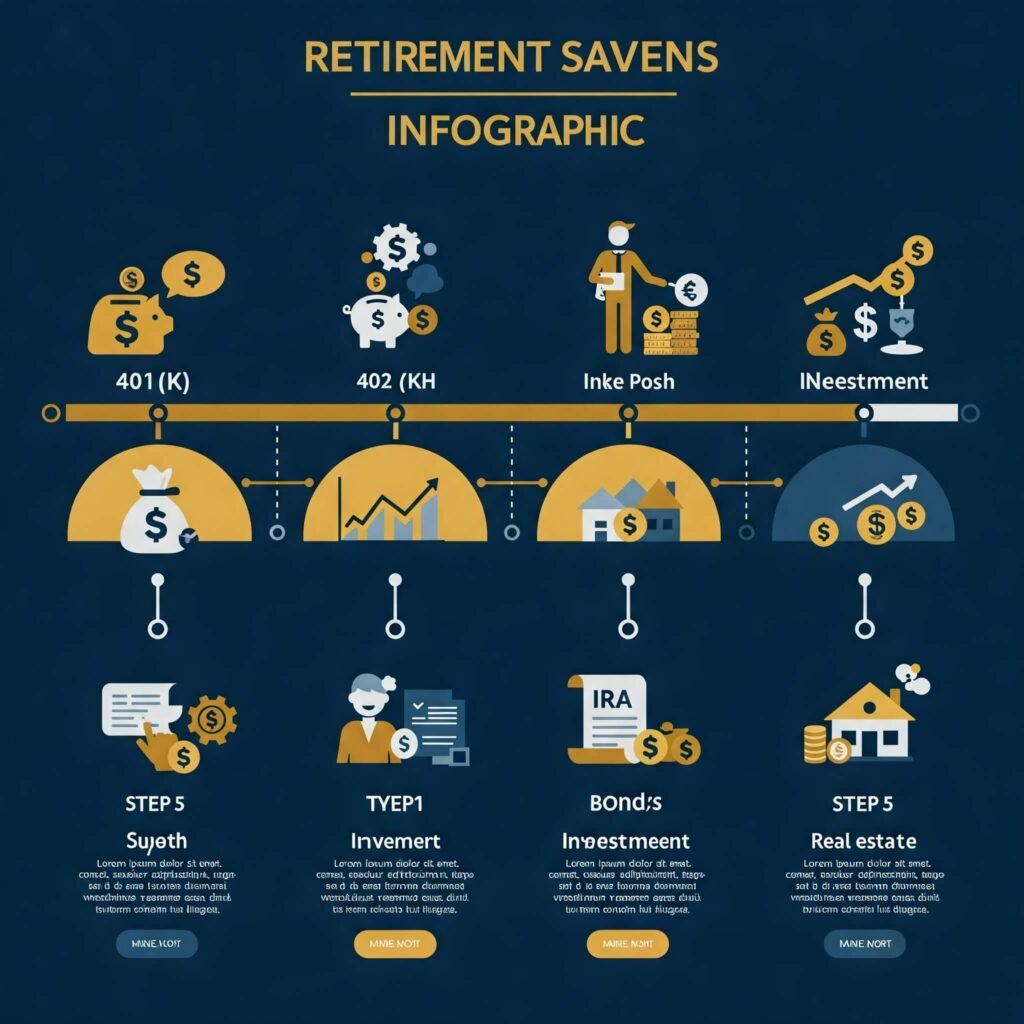Retirement savings strategies hinge on starting early, cutting fees, and maximizing contributions—spoiler: I learned this after skipping a year of 401(k) contributions for a music festival. These tips? Born from my sweaty scrolls, late-night app checks, and one mortifying call where I misread my Roth IRA limit. Tip from my flops: automate savings; I waited and missed compound interest. Contradiction: I preach planning, yet I blew $500 on a desert road trip—chaos vibes.
Strategy 1: Max Out Your 401(k) Match
A 401(k) with an employer match is a no-brainer for retirement savings strategies—free cash, yo. My gig offers a 4% match, max contribution $23,500 in 2025. Pro: tax breaks, doubles your savings. Con: high fees if you’re sloppy; I got hit with a 1.2% expense ratio, ouch. Surprising: auto-escalation bumped my savings without me noticing. Check Fidelity—don’t sign up mid-heatwave like me, fingers too sweaty for the app.

Strategy 2: Open a Roth IRA for Retirement Savings Strategies
Roth IRAs are clutch for retirement savings strategies—pay taxes now, cash out tax-free later. Started one with Vanguard, 0.04% fees, $7,000 max for 2025. Pro: tax-free growth, flexible withdrawals. Con: income caps; my freelance gigs almost DQ’d me. Surprising: you can pull contributions penalty-free—saved me during a car repair. Scope Vanguard—forgave my app fumble in 110°F heat.
- My Rookie Tip for Retirement Savings Strategies: Start Roth young; compound interest is wild.
- Why It Fit My Mess: Perfect for my low-income, big-dream vibe.
Strategy 3: Automate Savings for Retirement Savings Strategies
Automating contributions is a game-changer for retirement savings strategies. Set up $100 monthly to my Roth IRA, grew $1,200 in a year without thinking. Pro: set-and-forget ease. Con: needs a funded account; I overdrafted once, embarrassing. Surprising: small amounts add up fast. Use Schwab—don’t skip like I did, distracted by a taco truck line.
Strategy 4: Cut Fees
Low fees are key for retirement savings strategies—high expense ratios eat your gains. Switched to a Vanguard fund with 0.04% fees, saved $50 yearly vs. 1% funds. Pro: more money compounds. Con: research takes time; I skimmed and picked a dud first. Surprising: index funds are cheap and solid. Check Bankrate—saved me from fee traps.

Strategy 5: Diversify Investments
Diversifying across stocks, bonds, and ETFs in your hedges risks. I spread my 401(k) across index funds, gained 6% in a year. Pro: balances market dips. Con: overwhelming choices; I froze and picked randomly once. Surprising: robo-advisors simplify it. Try NerdWallet—kept my scatterbrain focused.

Wrapping My Rant
Whew, spilling this while Phoenix’s heat shimmers outside—feels like shaking off a sunburned stress nap. These retirement savings strategies didn’t erase my flops (that festival skip? Cost me a year of growth), but they got me to $4,000 saved, a solid start, and hey, I’m not eating ramen forever yet. Contradiction: I curse financial math, yet I’m stoked for a future RV life—peak Phoenix hustle, right? If you’re in the US grind—bills piling, retirement calling—hit these hacks, automate like I forgot to, and dodge my dumb moves. Got a savings horror? Spill below, let’s vent over virtual iced teas.
Outbound Link: Multiple Streams of Income: 12 ideas for creators (+ examples)




